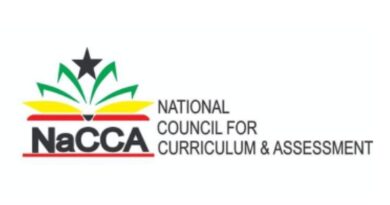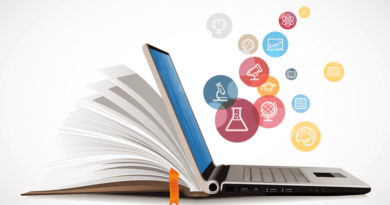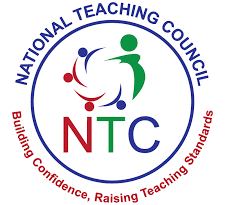The Role of Educational Informatics in Student Learning
The Role of Educational Informatics in Enhancing Student Learning
The Power of Information Technology in Education
The field of educational informatics is an interdisciplinary area of study that focuses on the use of technology to facilitate learning and teaching. Educational informatics applies a variety of information technologies, including software, hardware, networks, and databases, to create learning environments that are dynamic, interactive, and engaging. Its importance in education cannot be overstated, as it equips teachers with more tools to deliver quality instruction and help students learn more effectively.
One key advantage of educational informatics is that it provides students with a wealth of information at their fingertips. With digital resources such as e-books, online databases, and educational websites easily accessible, students can explore topics they are interested in at their own pace.
This access to information helps learners become more independent by providing them with the tools they need to take responsibility for their own learning. Additionally, students can learn through multi-sensory experiences which increase engagement levels and further improve retention rates.
Enhancing Learning through Communication and Collaboration
Another essential benefit provided by educational informatics is facilitating communication between teachers and students through online platforms like email or chat rooms where learners can ask questions or complete projects remotely. This feature allows learners who may be struggling with a concept to clarify doubts in private away from their peers or raise questions without the fear of being stigmatized.
It also provides an opportunity for teachers to reach out directly about assignments or new concepts. Moreover, educational informatics promotes collaboration among peers by enabling group projects that can be completed online—helping create teams working together from different locations around the world!
The ability for learners from different parts of the world where English is not the primary language they speak can work together on studies increases cultural exchange as well as peer-to-peer learning opportunities. Collaborative efforts also nurture social skills (such as cooperation, empathy, and understanding) that have become more important than ever in today’s globalized world.
Access to Information
Empowering Students with Digital Resources
Gone are the days when students had to rely solely on textbooks and encyclopedias for their information needs. With educational informatics, students now have access to a wealth of digital resources such as e-books, online databases, and educational websites. This has revolutionized the way we learn by empowering students with the ability to explore topics that interest them at their own pace.
E-books, in particular, have become increasingly popular among students as they can easily be accessed through mobile devices such as tablets or smartphones. They are also cost-effective and environmentally friendly compared to traditional print books.
Online databases provide students with access to scholarly articles and research papers that would normally be difficult or impossible to find without access to a university library. Educational websites often provide interactive learning experiences that help reinforce concepts taught in class.
Learning at Your Own Pace
One of the biggest advantages of educational informatics is that it allows students to learn at their own pace. With traditional classroom learning, some students may feel left behind if they do not grasp a concept right away or may become bored if they already understand it. However, with digital resources available 24/7, students can revisit materials until they fully understand them or move on quickly from concepts they already know.
Furthermore, many digital resources offer various modes of delivery such as video tutorials and interactive games which cater to different styles of learning. For instance, visual learners might prefer watching videos while kinesthetic learners might benefit more from hands-on activities offered through educational apps.
The availability of educational informatics has expanded the range of information accessible for student learning beyond traditional resources like print books. By providing an array of distinctive digital resources like e-books and online databases among others; all these allow individuals who use them efficient exploration capabilities at their own pace according to their individual goals and needs.
Facilitating Communication and Collaboration
The Online Connection
In today’s digital world, communication is key. Educational informatics has provided a way for teachers and students to connect outside of the classroom through various online platforms such as email, chat rooms, and discussion forums.
These platforms allow students to ask questions about course materials that were not clear during class time. Furthermore, they can clarify concepts they had trouble understanding or express their thoughts on different topics related to the course.
These digital platforms can be particularly helpful for shy students who may feel intimidated to ask questions in person or lead discussions in front of their peers. The anonymity of online communication allows them to express themselves freely without fear of judgement or ridicule.
Collaborating at a Distance
Educational informatics also promotes collaboration among students through group projects that can be completed online. With the use of educational technology tools such as Google Drive and Dropbox, students can easily collaborate with each other on projects from different locations.
The beauty of this is that it eliminates the need for physical meetings which is often inconveniencing given our busy schedules. Students don’t have to meet up at certain times or places; instead they work together virtually from wherever they are located.
Additionally, this type of collaboration helps develop transferable skills like teamwork, empathy towards others’ ideas and perspectives, and effective communication skills across mediums which are all essential life skills in today’s diverse workforce. In essence, educational informatics not only enhances student learning but also equips them with valuable 21st-century skills that will set them up for success later in life.
Personalized Learning
The Beauty of Personalized Learning
One of the most significant advantages of using educational informatics in enhancing student learning is its ability to provide personalized learning experiences. With educational informatics, students can learn at their own pace, choose the resources they want to use, and select the topics they want to study.
This approach to learning caters to individual differences in students’ interests, abilities, and learning styles. The personalized approach helps engage students since they are more invested in what they are learning.
Students who have control over their education tend to be more motivated and committed to their studies. They take ownership of their education and become active learners who seek knowledge for its intrinsic value rather than just for grades or external rewards.
Promoting Student Autonomy through Educational Informatics
Educational informatics also promotes student autonomy by allowing them to take charge of their education. Through digital resources such as e-books, online databases, and educational websites, students can access a wealth of information on any topic at any time.
They can choose the resources that work best for them based on their preferences and needs. Furthermore, educational informatics also helps teachers personalize instruction by providing data on each student’s progress and areas where they need improvement.
Teachers can track how much time students spend on each task or resource, how many questions they get right or wrong in assessments, which topics interest them the most or least, among other things. This data enables teachers to tailor instruction according to each student’s needs accurately.
Conclusion
Using educational informatics is a game-changer when it comes to enhancing student learning. It provides access to a wealth of information through digital resources such as e-books, online databases, and educational websites; facilitates communication between teachers and students; promotes collaboration among students during group projects that can be completed online; and promotes personalized learning by allowing students to choose the pace at which they learn, the topics they want to study, and the type of resources they use. The beauty of educational informatics lies in its ability to provide a personalized approach that caters to individual differences in students’ interests, abilities, and learning styles.
By doing so, it helps engage students and promote student autonomy. As technology continues to evolve, educational informatics will undoubtedly play an increasingly vital role in enhancing student learning.



